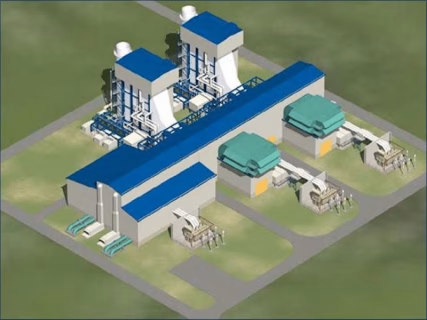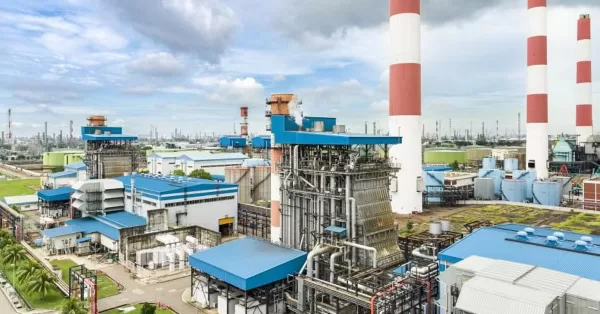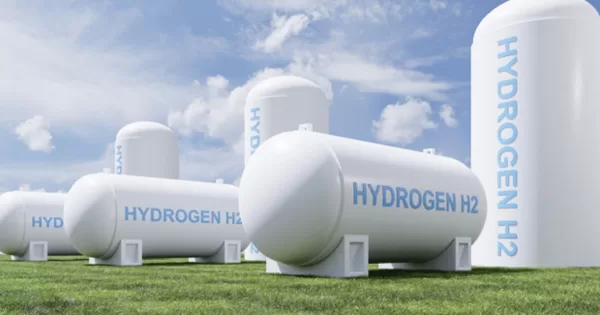Updated October 27, 2025 – GE Vernova and YTL PowerSeraya have started a post-combustion carbon capture (PCC) feasibility study for the planned 600 MW hydrogen-ready combined-cycle gas turbine (CCGT) plant on Jurong Island, Singapore. The PCC study will evaluate technologies capable of capturing up to 90 per cent of carbon dioxide emissions from the new facility. The project is supported by the Energy Market Authority (EMA) under its 2025 grant call for carbon-capture and storage (CCS) feasibility studies in the power sector.
YTL PowerSeraya is developing a hydrogen-ready combined-cycle gas turbine (CCGT) unit at its Pulau Seraya site in Jurong Island, Singapore. Awarded the right under the Energy Market Authority’s Centralised Process, the new unit is designed to meet rising demand and to operate with hydrogen co-firing from start-up. The project moved from RFP award to breaking ground in 2024 and expects to start commercial operations in 2027 through 2028. Singapore is also ramping up development on PacificLight’s new 670 MW, hydrogen-ready CCGT power plant also located on the island.
Project Factsheet: YTL PowerSeraya Hydrogen-Ready CCGT Unit at Pulau Seraya Power Plant Site in Singapore
Location: Pulau Seraya, Singapore
Developer and Owner: YTL PowerSeraya Limited
Capacity: 600 MW
Technology Use: H-class combined-cycle gas turbine
Start of Commercial Operation Date (COD): End of 2027 through 2028
Project Timeline
July 2023: EMA issues RFP under the Centralised Process.
Jan 2024: EMA awards YTL PowerSeraya right to build, own and operate a hydrogen-ready CCGT unit of at least 600 MW.
23 Oct 2024: YTL PowerSeraya holds a ground-breaking ceremony at Pulau Seraya for the new CCGT unit.
2025-2027: Engineering, procurement, and construction phases expected.
Late 2027-2028: Commercial operations expected to start at the power plant.

Project Overview: Hydrogen-Ready CCGT at Pulau Seraya Power Station Site, Singapore
Reported July 22, 2024 – The hydrogen-ready combined cycle gas turbine (CCGT) in Singapore’s Pulau Seraya area will be built, owned, and operated by YTL PowerSeraya (YTLPS). The company is a subsidiary of YTL Power International. Construction of the CCGT was greenlit after YTLPS won the Request for Proposal to develop a hydrogen-ready CCGT at Pulau Seraya Power Station (PSPS).
In July 2023, the Energy Market Authority (EMA) launched a request for proposals to ensure Singapore maintains sufficient generation capacity. After four proposals from different companies, YTLPS was awarded the contract in January 2024.
Upon winning the contract, YTL PowerSeraya Chief Executive Officer John Ng stated that the company is honored for being entrusted with the responsibility of constructing a hydrogen-ready CCGT at PSPS.
Their proposal featured the construction of a 600MW hydrogen-ready CCGT. The amount of energy the CCGT can carry will power 864,000 4-room flats for a year. The project cost is SGD 800 million and the target completion date is by end of 2027 through 2028.

Read also: Pan-Asia Railway Closer to Reality with 60% Finished East Coast Rail Link in Malaysia
A Hydrogen-Ready CCGT
The hydrogen hub will complement Singapore’s diverse energy sources. These include solar, imported electricity, and other low-carbon sources. It will also support the country’s generation capacity and meet the growing electricity demand.
YTL PowerSeraya CEO Mr. John Ng, also states that YTLPS is committed to shaping the energy landscape in Singapore. “YTL PowerSeraya will commit to contributing to Singapore’s energy security while maintaining environmental goals.”
Initially, the CCGT will carry a 30 percent hydrogen volume and 70 percent fossil fuel. Future retrofitting on the hub will increase the volume to 100 percent hydrogen-ready.
A combined-cycle gas turbine (CCGT) is a power plant that will generate electricity through the combination of gas and steam turbines. With a hydrogen-ready CCGT, the conversion from gas to hydrogen will be an easier process.
Hydrogen produces no carbon when burned which means this fuel does not negatively impact the environment. However, hydrogen production can cause varying levels of carbon emissions. Hydrogen production through “electrolysis” or splitting water molecules is green through solar energy. Extracting hydrogen from coal, however, creates substantial amounts of carbon emissions.

Singapore Green Plan: Net-Zero Emissions Goal by 2050
YTLPS’s hydrogen-ready CCGT is a step towards the “Singapore Green Plan”. This is the nation’s long-term goal of net-zero emissions by 2050.
As of 2022, the electricity generation capacity of Singapore stands at 12,800 MW. Due to the steady increase in energy demand with the rise of digitalization, the nation is looking to increase its energy capacity generation. The country is also planning to increase use electric vehicles by 2030, and cessation of diesel car registrations from 2025. Singapore is also moving towards clean energy models such as electric, hybrid, and hydrogen cells.
According to energy industry commentators, hydrogen production will become cost-effective by 2030. Researchers from institutions held in high regard like MIT and Harvard are also researching designs and locations for large-scale hydrogen generations.
Read also:
First Microchip Materials Plant in Singapore by Toppan Holdings Subsidiary AST, Operational by 2026
WuXI Biologics $1.4 Billion CRDMO Center Breaks Ground in Tuas Biomedical Park, Singapore
Vietnam-Singapore Submarine Cable to Support Vietnam’s Growing Digital Sector, Operational by 2027

